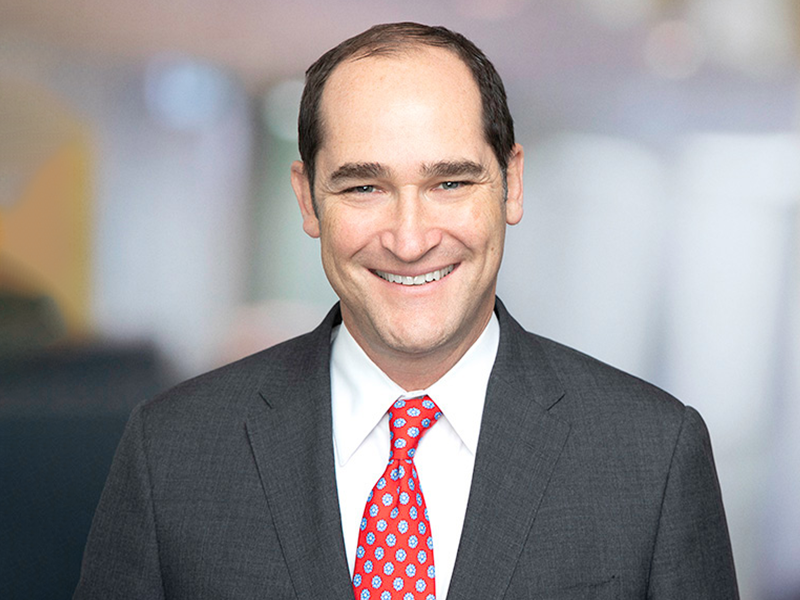A Closer Look at the Post-COVID-19 Office Landscape
SJP Properties’ Peter Bronsnick and Savills' Joe Learner elaborate on the coronavirus-inflicted changes the sector is undergoing and share adaptation strategies businesses can embrace.
Real estate experts had forecast a cloudless horizon for the national office market in 2020, indicated by a gradually growing skyline, sprawling development activity and healthy investor appetite. Early in the year, the coronavirus crisis forced the entire commercial landscape to shift due to the uncertainty resulting from prolonged social distancing measures. The office market is currently seeing growing pains, but adaptability remains key. Office space as we all know it will no longer exist in the post-COVID-19 future and design plans will follow new safety protocols.
In the interview below, Savills Vice Chairman, Director & Midwest Region Lead Joe Learner provides insights on some of the key strategies the office sector needs to implement in the post-pandemic world. Peter Bronsnick, president of SJP Properties, explains why the new office landscape will revolve around decentralization and suburban locations.
READ ALSO: CPE’s Coronavirus Coverage
How would you describe the office sector before the coronavirus outbreak?
Learner: The office market pre-COVID-19 was considered healthy, with continuing demand from occupiers coupled with new development activity levels that were appropriate in most markets. Pricing increases in most markets were moderate—with exceptions, such as the San Francisco Bay Area—but the increases were moderated for the occupier through space densification. This allowed for more employees utilizing the leased area and an upgrade in the quality and functionality of the space.
What has the global health crisis revealed about office spaces?
Learner: First and foremost, the density that spaces were outfitted for will no longer accommodate the needs for social distancing within the office. Additionally, most offices do not have protective barriers such as workstation partitions that will allow people to feel safe. Also, the way office design incorporated reception, cafés, casual collaboration areas and conferencing will all need to be readdressed.
What are the biggest changes you’ve seen in tenant leasing behavior so far?
Bronsnick: Tenants are already seeing the value in having secondary office locations outside of Manhattan. We have one tenant who was going to sign a lease that would have consolidated its New York City and New Jersey offices into one larger space in Manhattan. Once the virus hit, the company threw out that preliminary agreement—they felt the risk and effort of asking their New Jersey-based employees to commute to Manhattan was too great.
They also realized that having a team that works across multiple locations, including from home, wasn’t as detrimental to collaboration as they had initially thought. Ultimately, they decided to lease an office in New Jersey’s Metropark rather than housing all of their employees in Manhattan.
What are the most important issues landlords and tenants need to address during this pandemic?
Learner: Employees of the occupiers and of the landlord must be safe and feel safe. These employees need to be educated on safety for both themselves and others including how to safely commute, navigate the building and workplace, and use the elevator system.
Landlords and occupiers will establish new protocols to enforce social distancing by instituting guidelines for cleaning, hygiene, air quality and interaction with others in ways that differ from a few months ago. This will also include how many employees can be in the office during a given time or day, and how they will do their work and move around the office during the time that they are there.
In your article, “The New Paradigm: Office space occupier decision making criteria in the post-COVID-19 world,” you highlight several strategies the office sector needs to implement after the pandemic. Which of these strategies would you say are essential?
Learner: Employee safety is the number one objective. To achieve this, along with maintaining a successful business, companies will evaluate their real estate portfolio to see if it’s necessary to support their operations and provide a safe environment for employees. This may differ with portfolio size, number of locations, the location of the offices, and, certainly, the configuration of the offices.
To properly assess this, companies will take a holistic approach to incorporating real estate strategy, labor strategy, workplace strategy, technology and risk mitigation. The article is titled “The New Paradigm” because moving forward, the criteria evaluated and the prioritization of criteria by which companies will make real estate decisions will be different than that of the past.
Companies are rethinking and adapting their real estate strategies in order to meet the needs of their employees as well as government-imposed measures. How are central headquarters and centralized operations affected by recent changes?
Bronsnick: Altogether, those longtime real estate strategies of centralization, urbanization and densification are poised to be carefully evaluated. Human resources professionals and executives are going to be studying their labor base and employee scatter maps to see how much of their workforce is coming from the New Jersey, Connecticut and New York suburbs. Companies are realizing that decentralization of their operations is safer for employees—who can now avoid mass transit—and smarter, considering how much time people spend commuting to urban centers.
Central headquarters locations—in Manhattan, for example—will remain as they are while also adopting this hub-and-spoke model where they keep a main office but also take 20,000 to 50,000 square feet somewhere else, outside the city. Decentralizing operations will help to establish an inherent business continuity plan.
Will suburban locations benefit from a possible decline of urban centers? If so, how?
Bronsnick: Urban centers such as Midtown Manhattan won’t decline completely. New York City is incredibly resilient, and it has too many positive attributes that will help facilitate its recovery. With that said, I think it stands to reason that there will be a healthier balance between urban centers and the suburban markets.
As companies decentralize and take up a second office, for example in the New Jersey suburbs, they’re really just extending their presence. These suburban locations will thrive with an influx of Fortune 500 companies and there will be more drive to enhance those properties with plenty of amenities and outdoor green space. We’ll see a lot of creative placemaking in the suburbs that will ultimately turn more of them into live-work-play-stay locations.
READ ALSO: COVID-19 Highlights the Need for Smart Building Cybersecurity
What are some of the immediate changes we will see once offices reopen?
Learner: We will see many immediate changes put into effect such as less people at any given time, additional sanitization stations, more rigorous and frequent cleaning, social distancing, touchless devices if available, clean desk policies and the conversion of shared spaces such as conferencing, phone rooms etc. to individual spaces. Others include temperature and heat sensors, staggered start and end times, and fewer people in the elevator.
Bronsnick: There will be more square footage allotted per employee so that social distancing in the workplace can be achieved. Dense or bench-style seating arrangements aren’t going to be possible in a post-COVID-19 world, which will create new challenges for coworking providers. There will be wayfinding systems throughout offices, with reminders for social distancing and instructions on how to move through rooms and spaces. We will also likely see more touchless, destination dispatch elevator systems.
Social distancing at work means more square footage per employee. How will this affect office leasing and operations going forward?
Bronsnick: Companies that need more square footage per employee would again be wise to look to the suburban office market. The efficiencies in the New Jersey office market actually drive the cost of occupancy down and allow these companies to afford more space than they could in Manhattan buildings, at this time.
How did the shift to virtual showings influence office leasing as a whole?
Bronsnick: Virtual showings are a great short-term solution to marketing space, but it is limiting in its ability to convey the value of a real estate partner—especially in these challenging times. Additionally, space tours often require physical inspections of critical systems and various base-building closets.
How long do you think it will take for the post-COVID-19 redesigned, reimagined workplaces to replace offices as we know them now?
Learner: The industry is already hard at work on this, and that includes both space occupiers and building owners. These are changes that will be implemented as soon as is practical because everyone is not only responding to this crisis but is planning their workplace due to the potential for future crises.
What will office work look like in 2021, in a post-pandemic scenario.
Bronsnick: It’s hard to imagine there won’t be more acceptance of remote work in a post-pandemic world, but that will also vary greatly by sector. It would likely be easier for technology companies to sustain more remote workers but much more difficult for those in the financial sector. Companies that bifurcate operations and look elsewhere for secondary office—even just as far as the New Jersey waterfront—will also attract much of New Jersey’s high-skilled labor force that may not want to commute all the way to Manhattan.
How do you think the coronavirus pandemic will influence the national office market in the short and long term?
Learner: In the intermediate term and beyond, the office market will be fine. The work environment matters to employers and employees, so there will always be a need for the office. Collaboration is an important component in every business’s success, and this is done most successfully in person, in the office. In the near term, occupiers that don’t emerge from this crisis healthily will put supply back on the market, and others may as well. Occupiers may also hold off on taking new or expanded space. This will lower rental prices and property values in the near term.
Bronsnick: Companies are shifting both their strategies and their mindset. In the New York Metro area, we’ll inevitably see some deurbanization, but it will bounce back, as New York in itself is a powerful brand. Tenants everywhere are already beginning to ask questions around infrastructure, like power capabilities and accessibility, and that will only continue. Developers and landlords will also be more aware of the need for business continuity plans, pay even closer attention to their properties and listen even more to their tenants’ needs and concerns.











You must be logged in to post a comment.